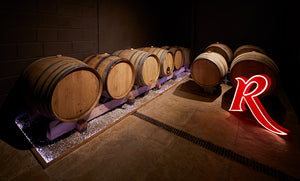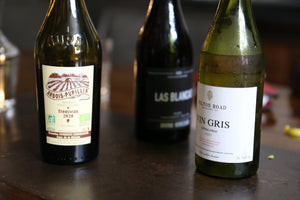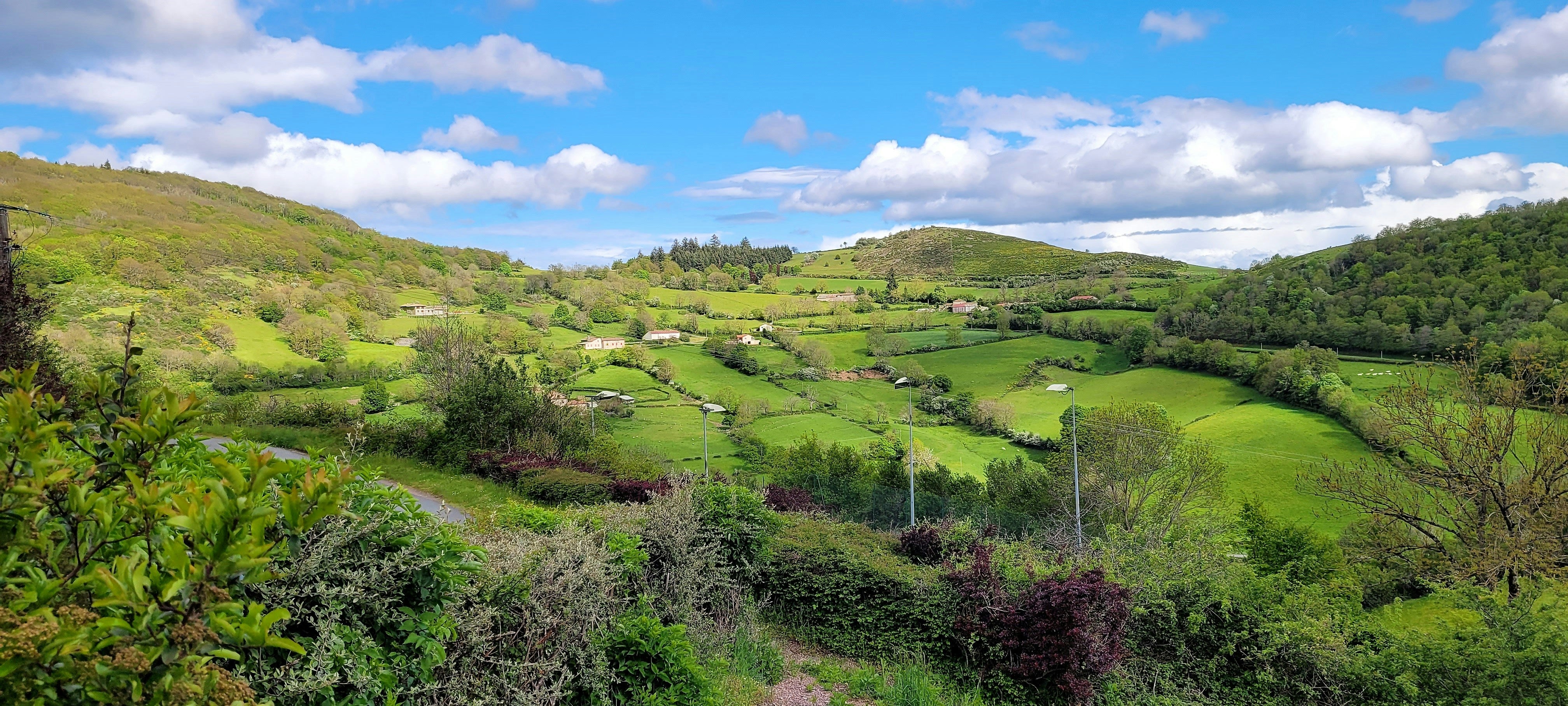Beaujolais Nouveau Day might grab headlines, but the true story of Beaujolais is written in the vineyards and cellars that work year-round. It's a narrative rich with detail, accessible yet profound, much like the wines themselves. As specialists for specialists, we’re proud to stock a small yet mighty selection of Beaujolais wines that embody the region's spirit – no snobbery, just pure, vinous passion.
SHOP THE RANGE HERE
Here are Ten Facts to Uncork Your Perspective on Beaujolais
Gamay: The Backbone of Beaujolais
Gamay might not command the prestige of some varietals, but in Beaujolais, it's the foundation upon which the region's reputation is built. This grape's adaptability to Beaujolais' terroirs results in a remarkable range of wines. From light and fruity to rich and complex, Gamay tells a different story in every vineyard. At Roberson, our selection reflects this diversity, showcasing the grape's multifaceted nature.
The Ten Pillars of Beaujolais: A (brief) Guide to the Beaujolais Crus
While Beaujolais is often thought of purely through its association with 'Nouveau', the real depth of the region is best explored through its ten crus. These are not just sub-regions but the pillars of Beaujolais' viticulture, each with a unique identity shaped by centuries of winemaking.
- Saint-Amour: Named for the patron saint of lovers, this northernmost cru is as romantic in profile as in name, offering wines with subtle spice and flirtatious fruit notes.
- Juliénas: Allegedly named after Julius Caesar, the wines here are as commanding as their namesake, with robust structure and a legacy that dates back to Roman times.
- Chénas: Once covered by a dense forest, Chénas produces wines as complex as its history, with an intensity that belies its small size.
- Moulin-à-Vent: Named after the local windmill, this cru is known for its full-bodied and tannic wines, often described as the most Burgundian of Beaujolais.
- Fleurie: True to its name, Fleurie blossoms with a floral bouquet and a velvety texture that has long been celebrated by wine lovers.
- Chiroubles: With vineyards at the highest altitude, Chiroubles offers wines that are light in body but rich in aromatic complexity.
- Morgon: Morgon wines, known for their deep cherry notes, embody the strength of their terroir and are revered for their aging potential.
- Régnié: The newest of the crus, Régnié wines are recognized for their approachable character and the vibrant fruit that reflects the region's youthful spirit.
- Brouilly: The largest cru, centred around Mount Brouilly, gives us approachable wines with a generous fruity core, perfect for a wide array of palates.
- Côte de Brouilly: Nestled on the slopes of an ancient volcano, this cru's wines are imbued with a mineral complexity and a structure that commands attention.
Beaujolais Nouveau: The Celebrated First Sip of the Harvest
Beaujolais Nouveau is not merely a wine; it is a cultural event, a vinous herald of the new harvest. Released on the third Thursday of November, it's the product of a rapid fermentation process that turns the freshly harvested Gamay grapes into a ready-to-drink wine within weeks.
The tradition began in the Beaujolais region, but found an unlikely echo in the UK, where the arrival of Nouveau became a cause for celebration and - sometimes - spirited competition. It was the British who coined the phrase "Le Beaujolais Nouveau est arrivé!," encapsulating the spirit of an enthusiastic race that began in the 1970s to deliver the first bottle to London.
This phenomenon is as much about the communal spirit of wine as it is about the beverage itself. Nouveau's quick journey from vine to glass symbolizes the turnover of the seasons and the culmination of a year's labour. It's a celebration as effervescent as the wine itself, one that continues to capture the imagination and palates of wine enthusiasts in the UK and beyond.
Every Grape is Hand-Harvested
Handpicking grapes is not a choice in Beaujolais; it's a mandate, steeped in both tradition and practicality. The region's old vines, many with histories as rich as the soils they spring from, yield grapes that machines could never harvest without harm. These vines are the source of Beaujolais' depth and complexity; they demand a human touch.
This practice goes beyond careful selection; it's a nod to the region's agricultural past and a commitment to its future. It ensures that from the robust old vines to the delicate young clusters, every grape that goes into a bottle of Beaujolais is there by design. Handpicking is the first step in crafting the nuanced, expressive wines that have become Beaujolais' hallmark.

Beaujolais Vinification: A Process Like No Other
Winemaking in Beaujolais is renowned for its distinctive technique, primarily a process known as semi-carbonic maceration. This technique is truly a bit of alchemy, designed specifically to enhance the Gamay grape's natural exuberance without extracting the harsher tannins.
In layman's terms, grapes at the bottom of a sealed tank get gently crushed by the weight of those above, starting a natural fermentation that's all about coaxing out those juicy, fruit-forward flavours without the bitterness of tannins. This process occurs as the carbon dioxide rich environment in the tank causes the grapes on the top to ferment within their skins, releasing juice and increasing the pressure on those below.
This isn't a quick dip and out. Maceration is a careful, days-long dance that defines a Beaujolais' body and soul—quick for the lively Nouveau, longer for the crus that'll cellar beautifully. After this, the wines are racked and pressed, blending the free-run and pressed juices to create that perfect balance of fresh and complex.
Beaujolais is a Part of Burgundy (kind of...)
While it might technically be nestled within the Burgundy region, Beaujolais stands apart with its own distinct identity. Boasting a grand swath of over 44,000 acres of vineyards spanning a 34-mile landscape, it is a world of its own - geographically and stylistically.
Its distinct climate, shaped by Mediterranean influences and the protective Massif Central, ripens grapes to perfection. The soil is a tale of two halves—from the granitic north to the clayey south—which dictates the dual personality of its wines: robust and complex versus light and fruity. This is Beaujolais, where geography meets grape in the most dramatic of fashions.
"Black Gamay with White Juice": What's in a Name?
'Gamay Noir à Jus Blanc' might sound like a mouthful, but it's the true name of the grape behind Beaujolais' charm. Translated in English as 'Black Gamay with White Juice', this grape's vibrant aromas stands out in the vineyard and in the glass. Different to the early ripening Pinot Noir clone known as 'Gamay Beaujolais' or Napa Gamay (actually Valdigué), this rather long-winded varietal is the secret weapon of Beaujolais. Dominating vineyards across the region with 98% of plantings, this grape is all about the unexpected – a dark skin that yields a surprisingly clear juice, leading to Beaujolais' signature ruby pours.
Beaujolais' Renaissance: A Quality Revival
The 1980s saw Beaujolais - particularly its Nouveau - riding high on a global wave of demand thanks to innovative marketing of figures like Georges Duboeuf. However, Nouveau's boom was soon followed by its bust; the surge in production led to a saturated market of sub-standard wines which, by the turn of the century, fomented a consumer backlash that tainted the image of Beaujolais wines.
Faced with surplus and shifting tastes, an evolution at the heart of Beaujolais was vital for the very survival of the region. Enter domaines like Julien Sunier, Dupeuble Père et Fils, and Jean Paul et Charly Thévenet. These vintners have become standard-bearers for the region's renaissance, rejecting the fleeting allure of Nouveau for wines of alluring complexity and significant aging potential. Oak aging and a focus on terroir are now key aspects of the region's output, with single-vineyard and Cru Beaujolais wines gaining prominence amongst consumers and critics alike. These wines highlight their communes not just on the label but through the characteristically intricate flavours in the bottle, marking Beaujolais's return to quality.

Beaujolais Labels Decoded: Your Quality Compass
As with many French regions, navigating the intricacies of Beaujolais labels can be confusing at first. A quick lesson in the appellations makes this much more straightforward.
- Beaujolais AOC: The base level, covering 60 villages, with wines like the easy-drinking Nouveau. These wines have a minimum alcohol level of 10%, and if they hit 10.5%, they're labelled "Supérieur."
- Beaujolais-Villages AOC: Mid-tier, from 39 northern communes with hillier, mineral-rich soils. Yields are limited for higher quality, and if it's from a single vineyard, the village name might feature on the label.
- Cru Beaujolais: The top-tier from ten specific areas (see above), these wines are typically fuller and more complex. They rarely mention "Beaujolais" on the label, focusing on the cru name instead.
Beaujolais & Seafood: An Unlikely Pair
It's high past time to dispel the myth that reds and seafood don't mix—Beaujolais challenges this old adage with success. The region's Gamay grape produces wines that are notably light and sprightly with a subtle acidity, complementing rather than overwhelming seafood dishes.
From the jovial and fruity offerings of southern Beaujolais to the more earnest and structured wines of the north, there's a bottle for every seafood occasion. Select a Morgon for a sumptuous grilled tuna, or a chilled Beaujolais AOC for a delicate shrimp salad.
SHOP ALL ROBERSON BEAUJOLAIS WINES




